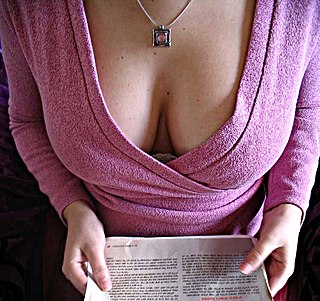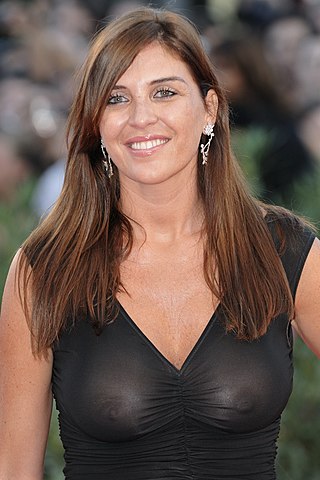
A cult film or cult movie, also commonly referred to as a cult classic, is a film that has acquired a cult following. Cult films are known for their dedicated, passionate fanbase which forms an elaborate subculture, members of which engage in repeated viewings, dialogue-quoting, and audience participation. Inclusive definitions allow for major studio productions, especially box-office bombs, while exclusive definitions focus more on obscure, transgressive films shunned by the mainstream. The difficulty in defining the term and subjectivity of what qualifies as a cult film mirror classificatory disputes about art. The term cult film itself was first used in the 1970s to describe the culture that surrounded underground films and midnight movies, though cult was in common use in film analysis for decades prior to that.

The Economist is a British weekly newspaper published in printed magazine format and digitally. It focuses on current affairs, international business, politics, technology, and culture. Based in London, the newspaper is owned by the Economist Group, with its core editorial offices in the United States, as well as across major cities in continental Europe, Asia, and the Middle East. The newspaper has a prominent focus on data journalism and interpretive analysis over original reporting, to both criticism and acclaim.

A subculture is a group of people within a cultural society that differentiates itself from the conservative and standard values to which it belongs, often maintaining some of its founding principles. Subcultures develop their own norms and values regarding cultural, political, and sexual matters. Subcultures are part of society while keeping their specific characteristics intact. Examples of subcultures include BDSM, hippies, hipsters, goths, steampunks, bikers, punks, skinheads, gopnik, hip-hoppers, metalheads, cosplayers, otaku, otherkin, furries, and more. The concept of subcultures was developed in sociology and cultural studies. Subcultures differ from countercultures.
Madeline Charlotte Moorman was an American cellist, performance artist, and advocate for avant-garde music. Referred to as the "Jeanne d'Arc of new music", she was the founder of the Annual Avant Garde Festival of New York and a frequent collaborator with Korean American artist Nam June Paik.

Damien Steven Hirst is an English artist and art collector. He is one of the Young British Artists (YBAs) who dominated the art scene in the UK during the 1990s. He is reportedly the United Kingdom's richest living artist, with his wealth estimated at US$384 million in the 2020 Sunday Times Rich List. During the 1990s his career was closely linked with the collector Charles Saatchi, but increasing frictions came to a head in 2003 and the relationship ended.

Takashi Murakami is a Japanese contemporary artist. He works in fine arts as well as commercial media and is known for blurring the line between high and low arts. His influential work draws from the aesthetic characteristics of the Japanese artistic tradition and the nature of postwar Japanese culture. He designed the album covers for Kanye West's third studio album Graduation and West and Kid Cudi’s collaborative studio album Kids See Ghosts.

Cleavage is the narrow depression or hollow between the breasts of a woman. The superior portion of cleavage may be accentuated by clothing such as a low-cut neckline that exposes the division, and often the term is used to describe the low neckline itself, instead of the term décolletage. Joseph Breen, head of the U.S. film industry's Production Code Administration, coined the term in its current meaning when evaluating the 1943 film The Outlaw, starring Jane Russell. The term was explained in Time magazine on August 5, 1946. It is most commonly used in the parlance of Western female fashion to refer to necklines that reveal or emphasize décolletage.

Nation and Race: The Developing Euro-American Racist Subculture is a book edited by Jeffrey Kaplan and Tore Bjørgo. It collects the papers of an international conference held in New Orleans, from December 8 to 11, 1995.
Andrew Miller is a British journalist and author, best known for his debut novel, Snowdrops, published under the name A.D. Miller. He studied literature at Cambridge and Princeton and worked in television before joining The Economist magazine as a reporter in 2000.

A handbra is the practice of covering female nipples and areolae with hands or arms. It often is done in compliance with censors' guidelines, public authorities and community standards when female breasts are required to be covered in film or other media. If the arms are used instead of the hands the expression is arm bra. The use of long hair for this purpose is called a hair bra.

The history of bras is closely tied to the social status of women, the evolution of fashion, and shifting views of the female body over time.
A bra, short for brassiere or brassière, is a form-fitting underwear that is primarily used to support and cover a woman's breasts. A typical bra consists of a chest band that wraps around the torso, supporting two breast cups that are held in place by shoulder straps. A bra usually fastens in the back, using a hook and eye fastener, although bras are available in a large range of styles and sizes, including front-fastening and backless designs. Some bras are designed for specific functions, such as nursing bras to facilitate breastfeeding or sports bras to minimize discomfort during exercise.

Jeffrey Lynn Koons is an American artist recognized for his work dealing with popular culture and his sculptures depicting everyday objects, including balloon animals produced in stainless steel with mirror-finish surfaces. He lives and works in both New York City and his hometown of York, Pennsylvania. His works have sold for substantial sums, including at least two record auction prices for a work by a living artist: US$58.4 million for Balloon Dog (Orange) in 2013 and US$91.1 million for Rabbit in 2019.
Goliath Books is a publisher of art and photography books, founded in 1997 by Miki Bunge in New York. Goliath's objective is to publish diverse and daring photography and art books and to introduce controversial, erotic and fringe themes to a mainstream audience. Goliath continues to be noteworthy for their ongoing publication of artists who fall outside traditional practices. The publisher's ongoing mission is to explore and transform the public's approach to art, erotic themes, pornography and perspectives from a range of subcultures.

In Western society, since the 1960s, there has been a slow but steady trend towards bralessness among a number of women, especially millennials, who have expressed opposition to and are giving up wearing bras. In 2016, Allure magazine fashion director Rachael Wang wrote, "Going braless is as old as feminism, but it seems to be bubbling to the surface more recently as a direct response to Third Wave moments like #freethenipple hashtag campaign, increased trans-visibility like Caitlyn Jenner's Vanity Fair cover ... and Lena Dunham's show Girls."

Elizabeth Currid-Halkett is an American academic and author. She is the James Irvine Chair of Urban and Regional Planning and Professor of Public Policy at the University of Southern California.
Paola Sapienza is an American and Italian economist. She is a member of the Kellogg School of Management faculty at Northwestern University. She is also a research associate at the NBER and CEPR. Her fields of interest include financial economics, cultural economics, and political economy.
Sarah Ditum is an English columnist and author whose work has appeared in publications including The Guardian, New Statesman, The Times, and UnHerd. She is based in Bath. Ditum's writing has covered issues including violence against women, gender identity, parenting, British parliamentary politics and cancel culture. She also writes regular book reviews. Her book Toxic: Women, Fame and The Noughties, about misogyny in celebrity culture during the 2000s, was published by Fleet in 2023.
Institute of Contemporary Art San Francisco is an American contemporary art museum that opened in October 2022, and is located in the Dogpatch neighborhood of San Francisco, California. Admission is free.












